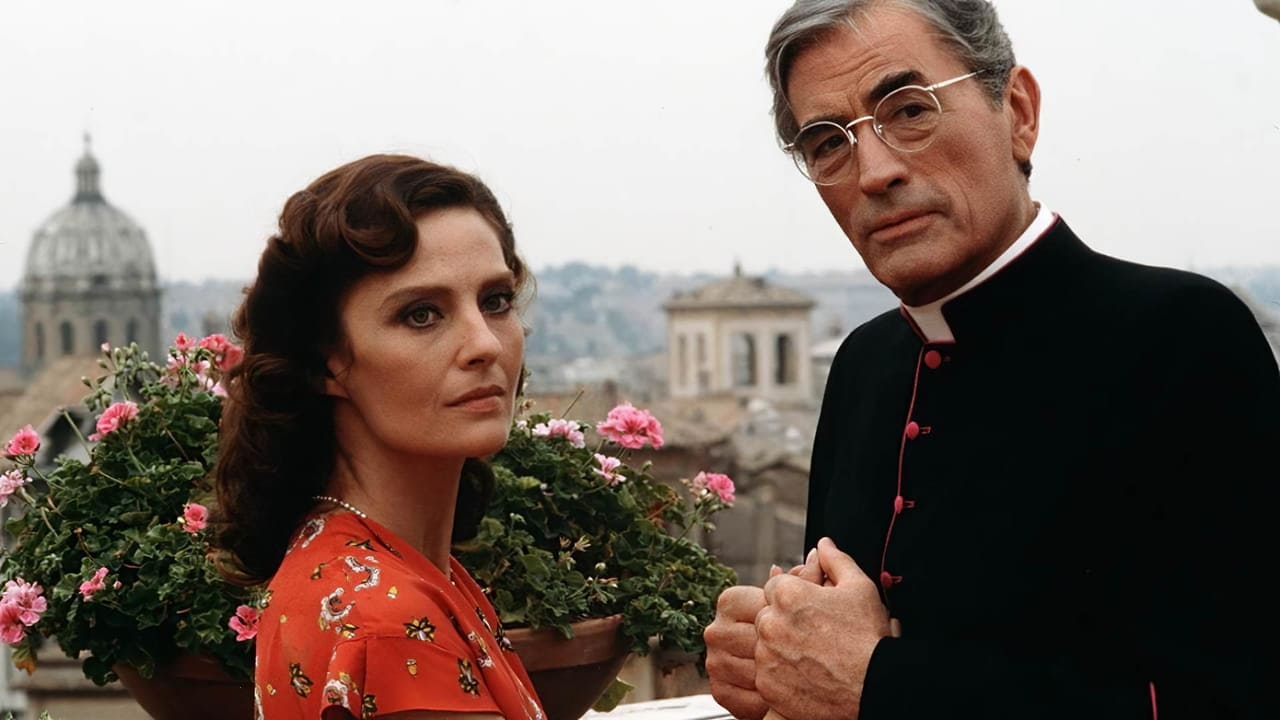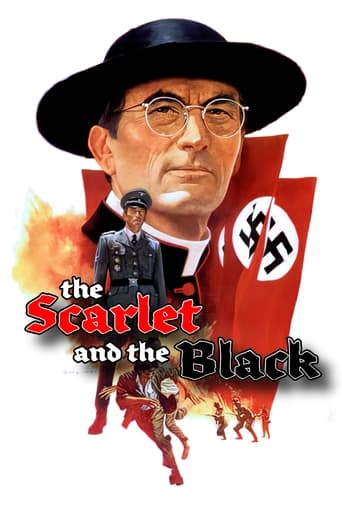


What can I say about this story?Not enough!This story could have easily been made into a major motion picture.I am glad that it was made for television because then it wasn't perverted by George Clooney or Jessica Lange with filthy language,nudity and bad acting.Gregory Peck played the part of the Roman Catholic priest just right.Christopher Plummer as the Nazi officer who comes to Rome and the Vatican because he has the bizarre idea that he and Hitler own them was amazing.Christophe Plummer and Gregory Peck were the perfect duo of older talented actors to play off against one another as the good priest a man of God against the bad Nazi a man whose two gods are Satan and Hitler.I was transfixed the minute I started watching this movie so many years ago.I liked the music with the percussion in parts of the movie.Quite a good effect.Check this one out if you are looking for a good story that is based on actual incidents.I have this movie on DVD.
... View MoreAfter playing a fictional portrayal of Joseph Mengele in "The Boys From Brazil" in 1978, Gregory Peck turned to the Allies for his next portrayal of a real-life World War II figure. He is Monsignor Hugh O'Flaherty, an Irish priest working in the Vatican and involved in hiding Ally soldiers from the Nazis. After escaping from the Nazis as Captain Von Trapp in "The Sound of Music", Christopher Plummer becomes Colonel Herbert Kappler, the Nazi commander in charge of keeping control of Rome after the fall of Mussolini. A devoted family man (ironically with a daughter named Liesel), he is never the less determined to undermine the Vatican organization helping Nazi enemies. At first, there is polite annoyance between the two men (they meet at the opera and exchange pleasantries), but later, once the battle lines are drawn, Kappler makes his determination to destroy O'Flaherty known. Promising to arrest him if he steps over the Nazi created white line between Rome and Vatican City, Kappler is angered by O'Flaherty's obvious taunting by standing just out of Rome over the line, almost vindictively. O'Flaherty also disguises himself continuously to continue his mission, and you half expect Kapper to screech, "Curses, Curses, Somebody always helps that priest!" This brings humour into the story which is serious yet never maudlin. On O'Flaherty's side is the brilliant Sir John Gielgud as Pope Pius, later criticized for not doing enough to stop the Nazis. One scene has Gielgud confessing his regrets to Peck, showing off the papal treasures to him in a scene that is of major historical interest to Religious historians.Gielgud makes Pope Pius extremely easy going and like his name, pious but not pompous. Peck makes Father O'Flaherty extremely human and vulnerable, and the type of priest any parish would be proud to have. Even with his constant pausing in the middle of his lines, Plummer is totally believable. His Nazi Colonel is not the one-dimensional hiss-able villain. You will really feel for him as he watches the Nazi world crumbling around him and the worry he feels of what will happen to his family once everything caves in. The confrontation scene between Peck and Plummer at the Colliseum is both powerfully dramatic and characteristically revealing about the flaws and virtues of both men. The conclusion is touching and results in a feeling of triumph that good always wins over evil.
... View MoreThis should be mandatory viewing in all "20th Century Europe" history classes. Also, unlike what another viewer inferred, the romance between the young couple in the movie is NOT fictional. It is based on real people and they did marry after the end of the war. Read about it in "The Scarlet Pimpernel of the Vatican" which is available at libraries. Also, anyone who liked this movie would love the book and the movie "The Assisi Underground". The movie stars James Mason, Maximilian Schell, Irene Papas and Ben Cross. Their is also a documentary of this story available thru interlibrary loans called "Assisi in Silence". It was filmed in Assisi and has real interviews with people and relatives involved in saving Jews in Assisi.
... View MoreBased on a true story set during World War II in Rome, this made for television movie stars Gregory Peck in yet another fine role,(as if he could ever do a bad one.)The supporting cast is also amazing with fine performances from Christopher Plummer and Sir John Gielgud, with Raf Valone, Vernon Dobchef and Walter Gotell among others. It is a fast paced history/war/drama/thriller in the mold of such films as "The Third Man," and "The Thirty Nine Steps." The frenetic musical score of Ennio Morricone (The Good, The Bad and The Ugly) helps to keep the pace on the edge of you seat. This is simply some fine film making at its very best, and I highly recommend it, if you have not already had a chance to see it. Just a beautiful film.
... View More